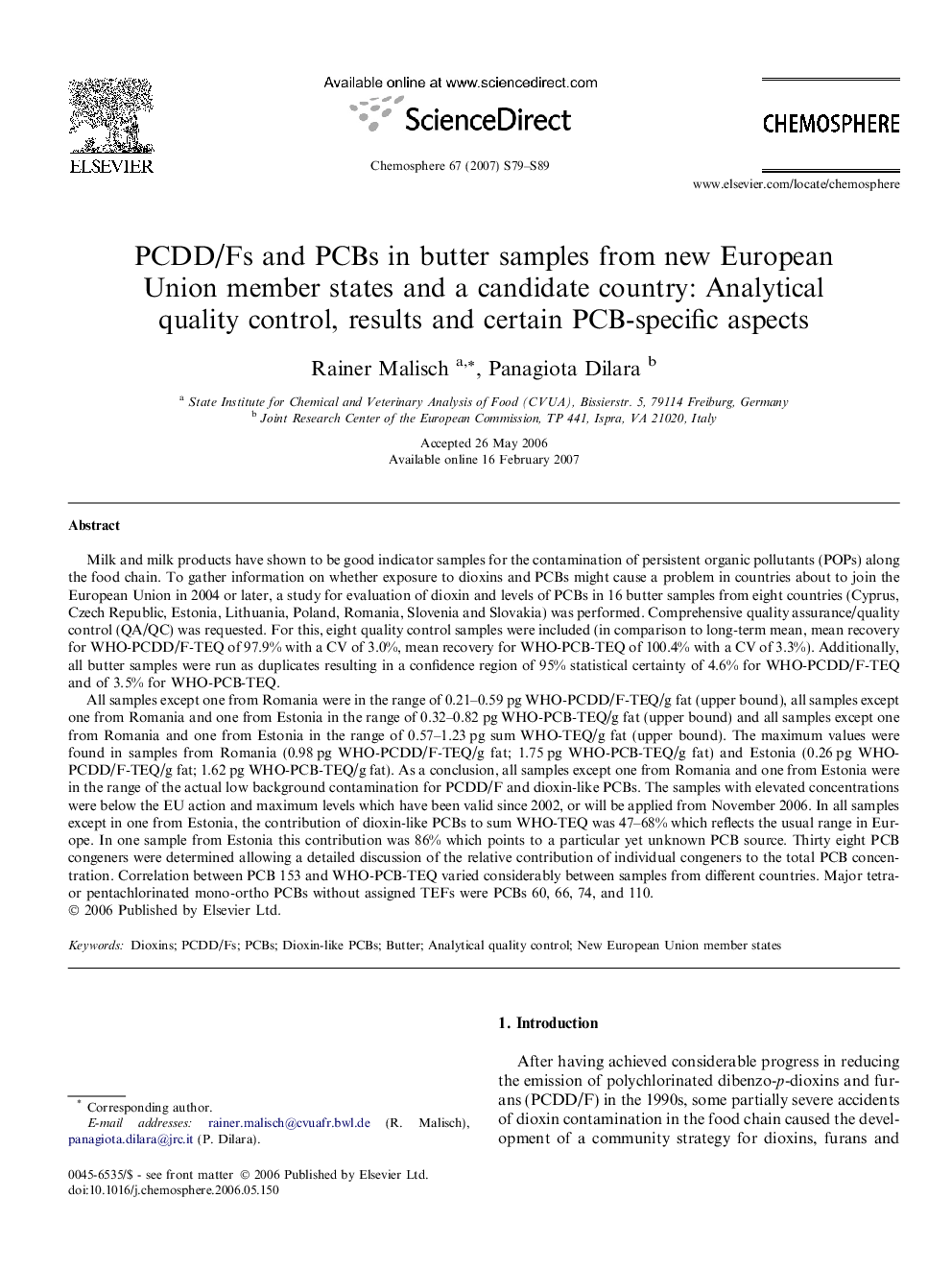| کد مقاله | کد نشریه | سال انتشار | مقاله انگلیسی | نسخه تمام متن |
|---|---|---|---|---|
| 4415127 | 1307737 | 2007 | 11 صفحه PDF | دانلود رایگان |

Milk and milk products have shown to be good indicator samples for the contamination of persistent organic pollutants (POPs) along the food chain. To gather information on whether exposure to dioxins and PCBs might cause a problem in countries about to join the European Union in 2004 or later, a study for evaluation of dioxin and levels of PCBs in 16 butter samples from eight countries (Cyprus, Czech Republic, Estonia, Lithuania, Poland, Romania, Slovenia and Slovakia) was performed. Comprehensive quality assurance/quality control (QA/QC) was requested. For this, eight quality control samples were included (in comparison to long-term mean, mean recovery for WHO-PCDD/F-TEQ of 97.9% with a CV of 3.0%, mean recovery for WHO-PCB-TEQ of 100.4% with a CV of 3.3%). Additionally, all butter samples were run as duplicates resulting in a confidence region of 95% statistical certainty of 4.6% for WHO-PCDD/F-TEQ and of 3.5% for WHO-PCB-TEQ.All samples except one from Romania were in the range of 0.21–0.59 pg WHO-PCDD/F-TEQ/g fat (upper bound), all samples except one from Romania and one from Estonia in the range of 0.32–0.82 pg WHO-PCB-TEQ/g fat (upper bound) and all samples except one from Romania and one from Estonia in the range of 0.57–1.23 pg sum WHO-TEQ/g fat (upper bound). The maximum values were found in samples from Romania (0.98 pg WHO-PCDD/F-TEQ/g fat; 1.75 pg WHO-PCB-TEQ/g fat) and Estonia (0.26 pg WHO-PCDD/F-TEQ/g fat; 1.62 pg WHO-PCB-TEQ/g fat). As a conclusion, all samples except one from Romania and one from Estonia were in the range of the actual low background contamination for PCDD/F and dioxin-like PCBs. The samples with elevated concentrations were below the EU action and maximum levels which have been valid since 2002, or will be applied from November 2006. In all samples except in one from Estonia, the contribution of dioxin-like PCBs to sum WHO-TEQ was 47–68% which reflects the usual range in Europe. In one sample from Estonia this contribution was 86% which points to a particular yet unknown PCB source. Thirty eight PCB congeners were determined allowing a detailed discussion of the relative contribution of individual congeners to the total PCB concentration. Correlation between PCB 153 and WHO-PCB-TEQ varied considerably between samples from different countries. Major tetra- or pentachlorinated mono-ortho PCBs without assigned TEFs were PCBs 60, 66, 74, and 110.
Journal: Chemosphere - Volume 67, Issue 9, April 2007, Pages S79–S89